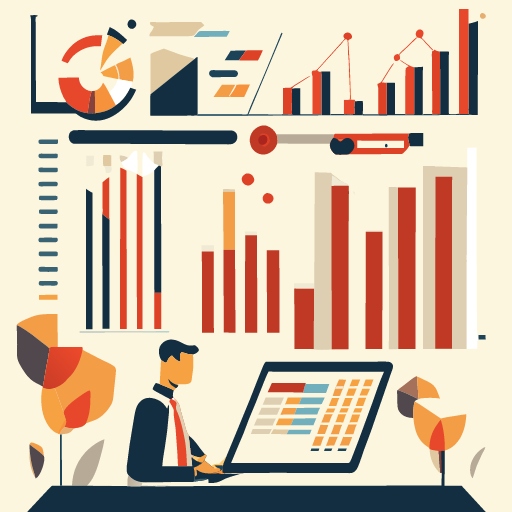Explore the realm of quantitative analysis

Introduction
More than being about working with numbers, Quantitative Analysis is about making meaningful findings from those numbers. Quantitative Analysis acts as a guide for businesses, scholars and decision makers, and whether you are a newbie in the world of Research and analysis, or an experienced analyst, this guide is tailored for your needs.
Quantitative Analysis: The Cornerstone of Decision Making
From stock market investments to predicting consumer behaviour, quantitative analysis serves as the backbone of several crucial decisions. But what is it exactly?
What is Quantitative Analysis?
The fundamental part of Quantitative analysis involves a systemic examination of numerical data. By employing statistical and mathematical models, analysts can derive actionable insights from raw data. It’s a rigorous approach that demands accuracy and precision.
Tools of the Trade
Dabbling in quantitative analysis requires a strong arsenal of tools:
1. Statistical Software: Softwares like SPSS, R, and SAS aid analysts in processing large datasets and deriving patterns.
2. Spreadsheet Programs: Microsoft Excel remains a favourite among professionals for basic analyses and data visualisation.
3. Data Mining Applications: These are specialised tools designed to unearth patterns in vast datasets. Examples include RapidMiner and KNIME.
Benefits of Quantitative Analysis in Business
Businesses stand to gain tremendously from quantitative analysis:
– Risk Management: It assists in evaluating potential risks and creates plans to minimize the risks.
– Financial Forecasting: By analysing past data, businesses can predict future trends.

– Operational Efficiency: Quantitative data pinpoints areas of inefficiency, and opens doors for improvements in the process.
Delving Deeper: Advanced Concepts in Quantitative Analysis
Understanding the basics is just the tip of the iceberg. Let’s dive deeper!
Regression Analysis
It’s a statistical tool employed to understand the relationship between variables. For instance, in the context of business, regression can help understand how different factors like marketing spend and regional demographics impact sales.
Time Series Analysis
Time series analysis becomes relevant when data points are gathered or documented at different time intervals. This technique can be instrumental in predicting stock prices or understanding seasonal variations in sales.
Real-World Applications of Quantitative Analysis
The beauty of quantitative analysis lies in its versatility. From finance to healthcare, its applications are boundless.
Quantitative Finance
Traders and investors utilize the quantitative techniques to forecast stock values and evaluate market uncertainties, and help construct portfolios. Some instances of Quantitative finance in practice ae Algorithms and high-frequency trading.
Public Policy and Planning
Governments and policymakers rely on quantitative data to shape public policies. Regardless of if its budget allocation or field of urban planning, using data-driven information has the potential to enhance the quality of decision-making processes.
FAQs on Quantitative Analysis
- What are the prerequisites for a career in quantitative analysis?
A strong background in mathematics and statistics is essential. Additionally, proficiency in programming languages and software tools used in the analysis is advantageous.
- How does quantitative differ from qualitative analysis?
While quantitative analysis deals with numerical data, qualitative analysis focuses on non-numerical data like opinions, motivations, and feelings.
- Are there limitations to quantitative analysis?
Yes, quantitative analysis, though powerful, relies heavily on the quality of data. Incorrect or biassed data can lead to erroneous conclusions.
- Which industries employ quantitative analysts?
From finance to marketing and from healthcare to logistics, almost every industry today has a role carved out for quantitative analysts.
- Can small businesses benefit from quantitative analysis?
Absolutely! With the rise of affordable analytics tools and software, even small businesses can harness the power of data to make informed decisions.
- What’s the future of quantitative analysis?
With the surge in big data and machine learning, the future looks promising. As technology evolves, the methods and tools for quantitative analysis will only get more sophisticated.
Conclusion
In the fast-paced world of data, Quantitative Analysis emerges as the lighthouse guiding businesses and researchers. By learning the complexities and uses of it, individuals can maintain a competitive edge and make well-informed decisions driven by data that is significant.
External Links/ Sources:
